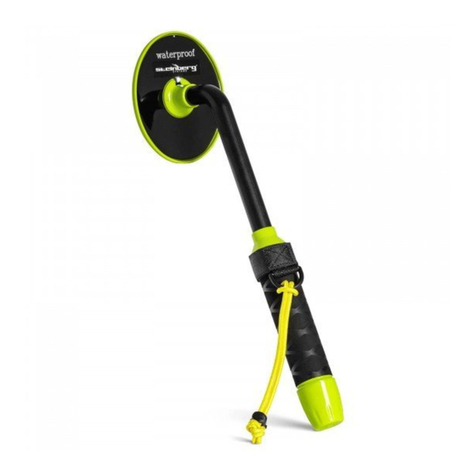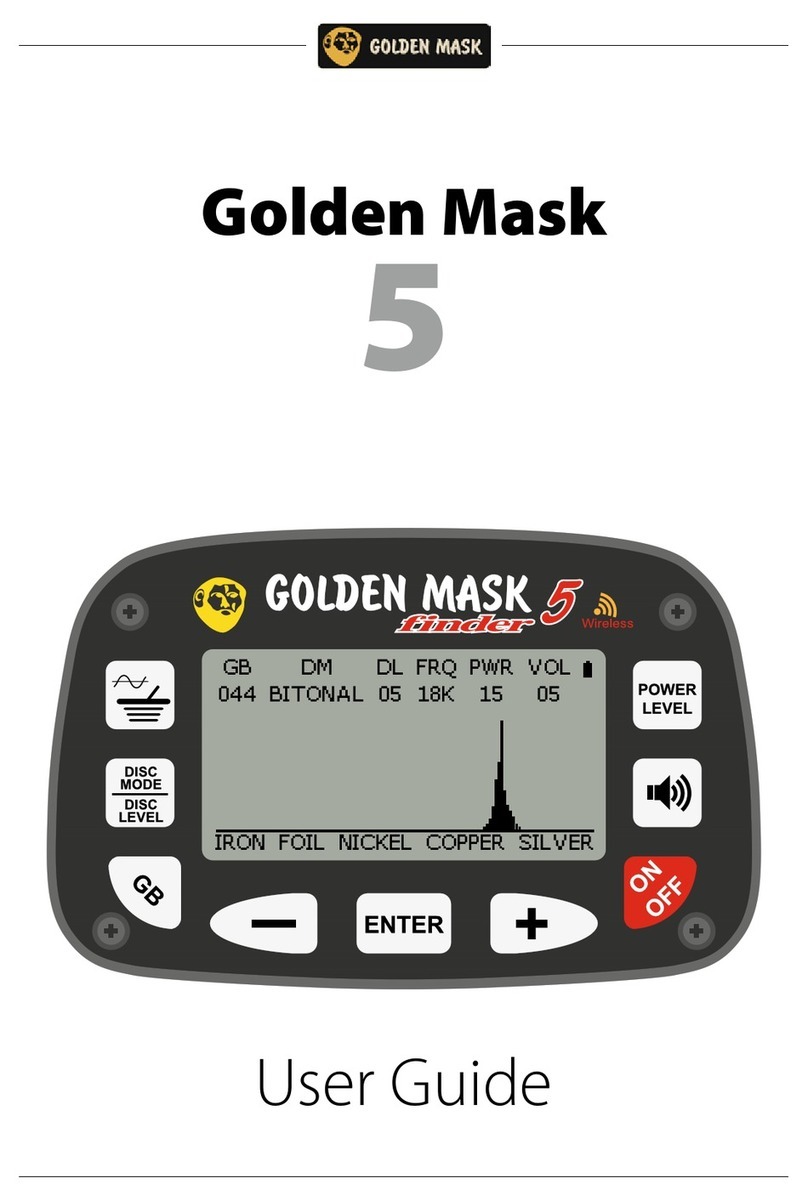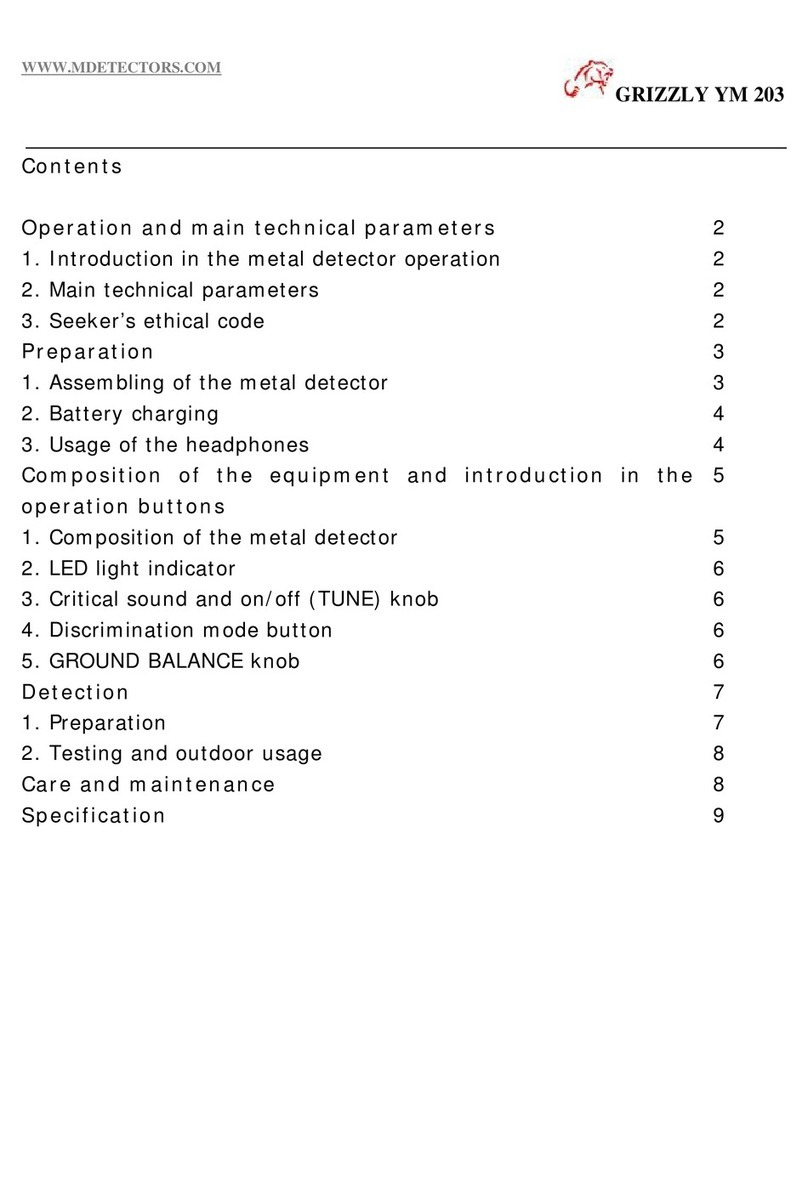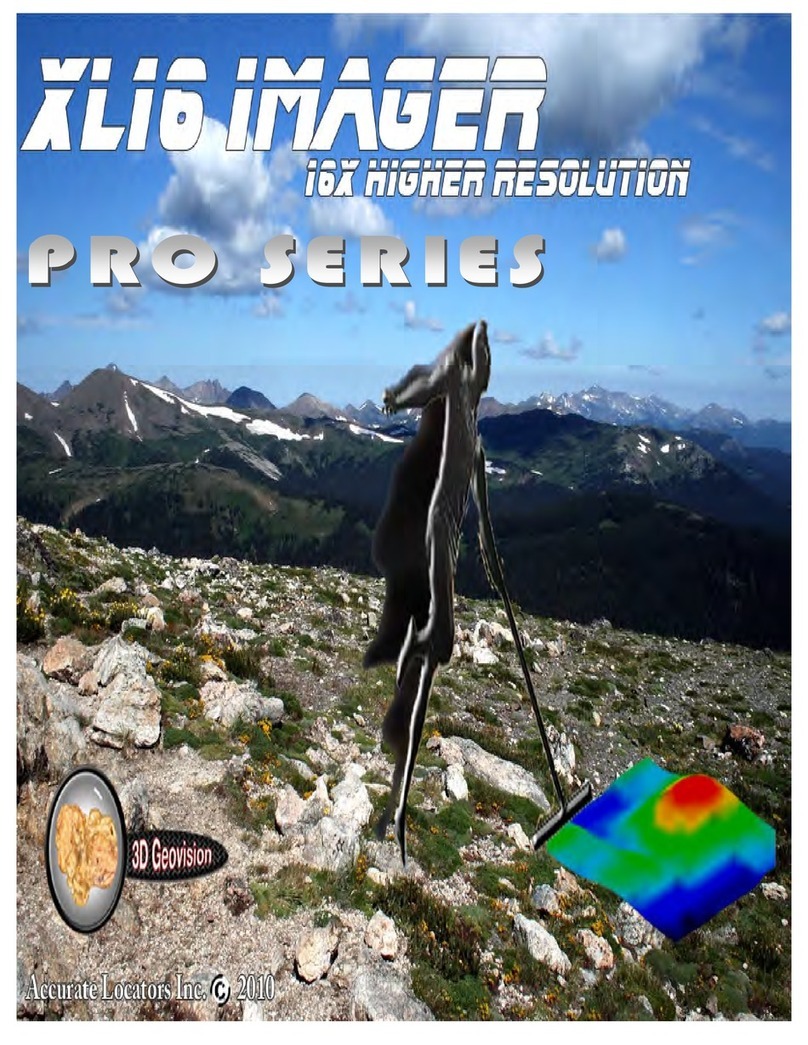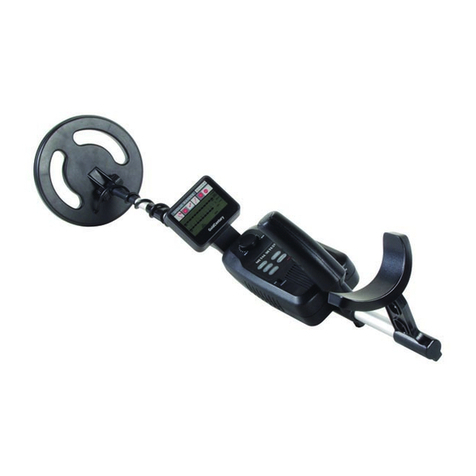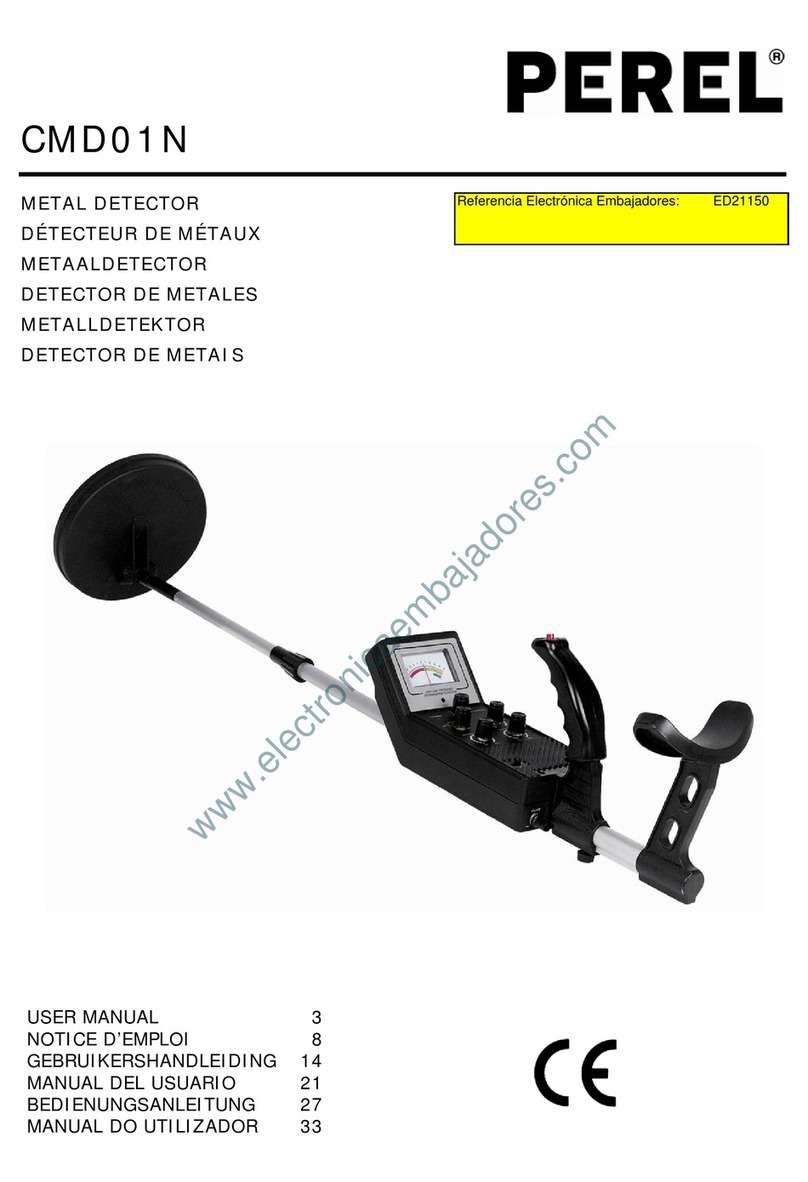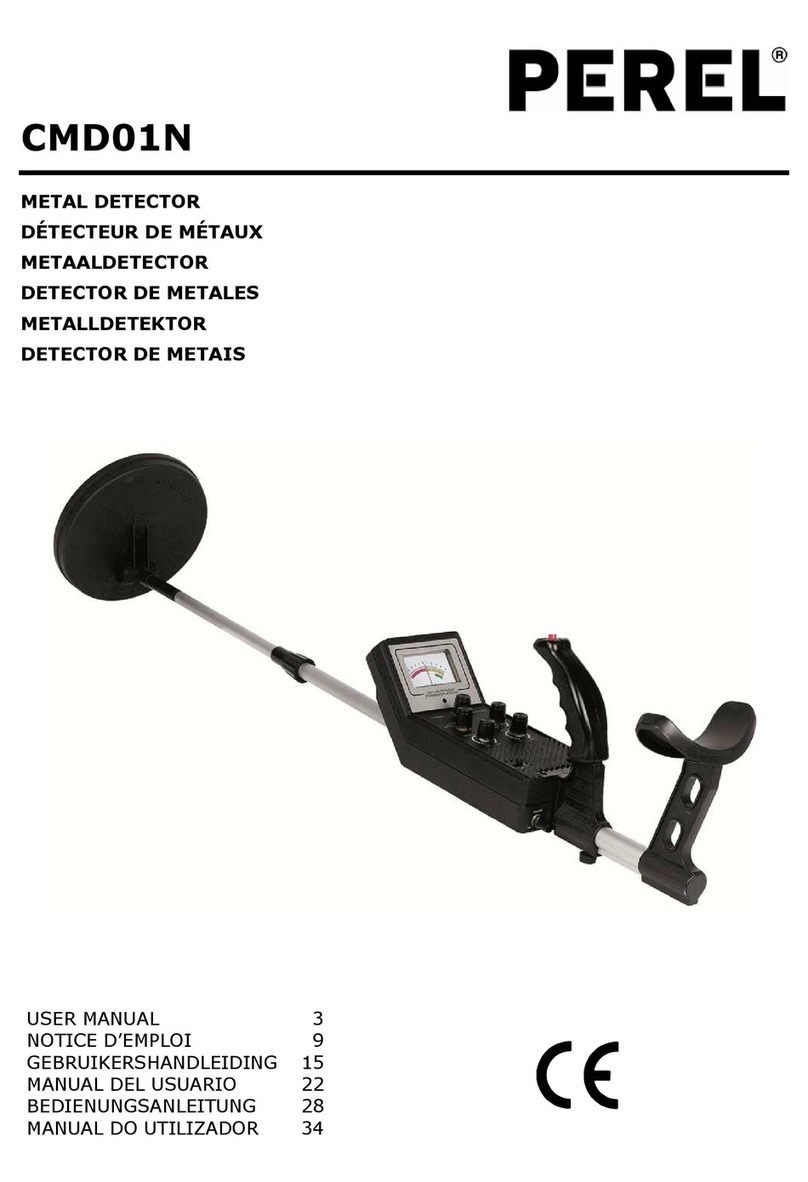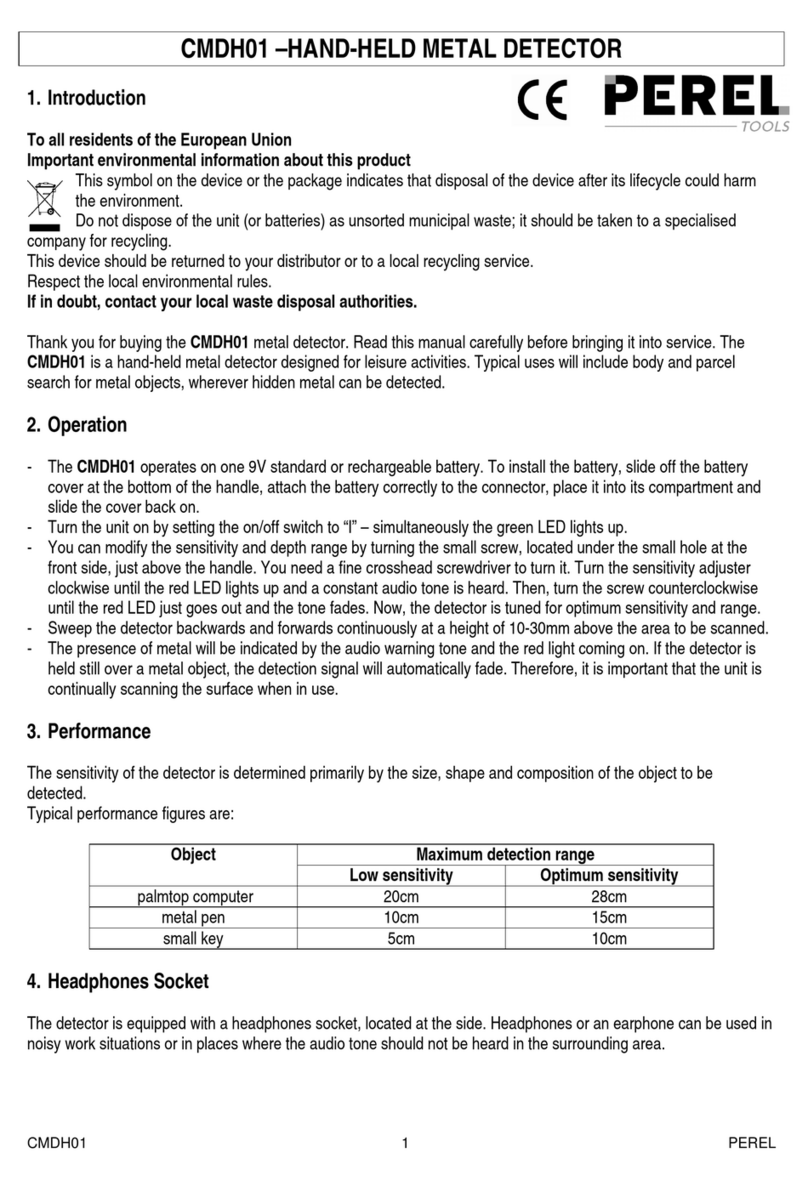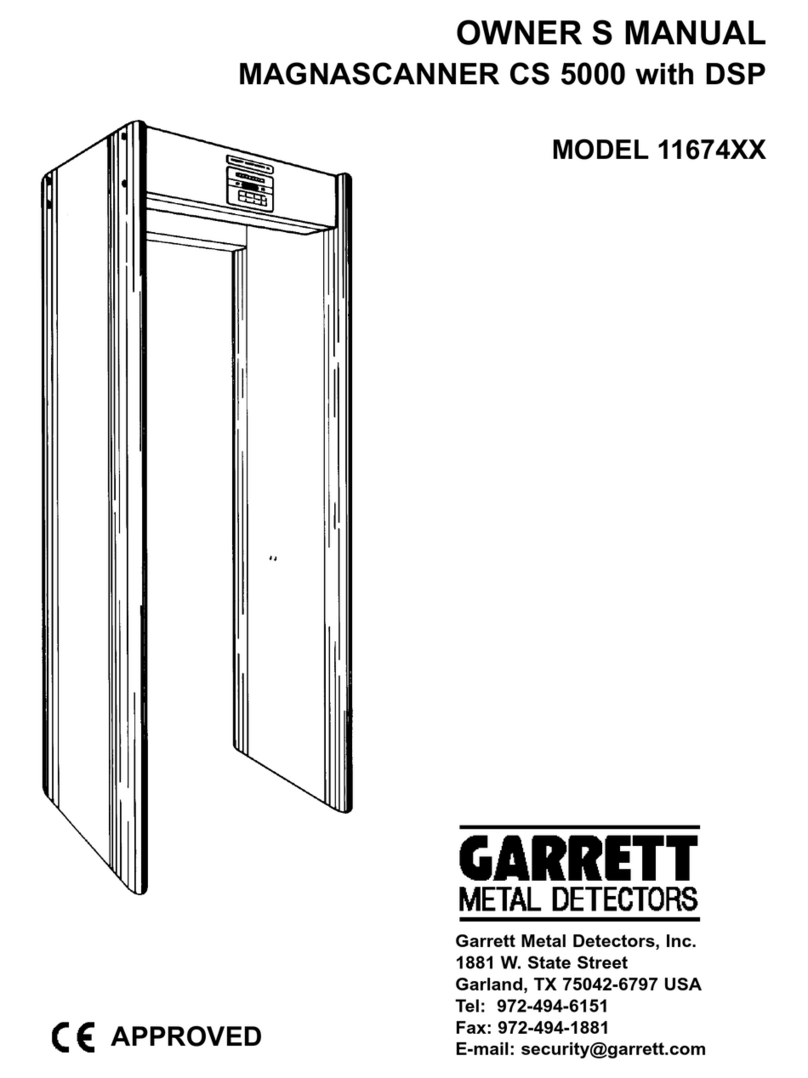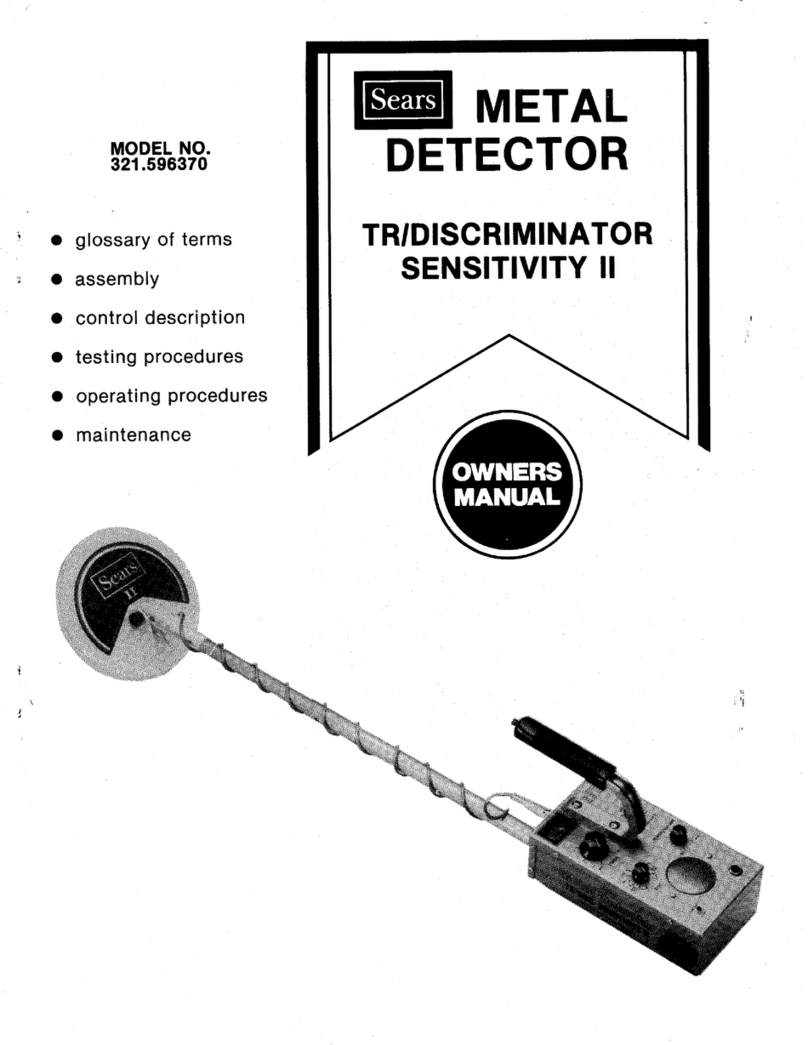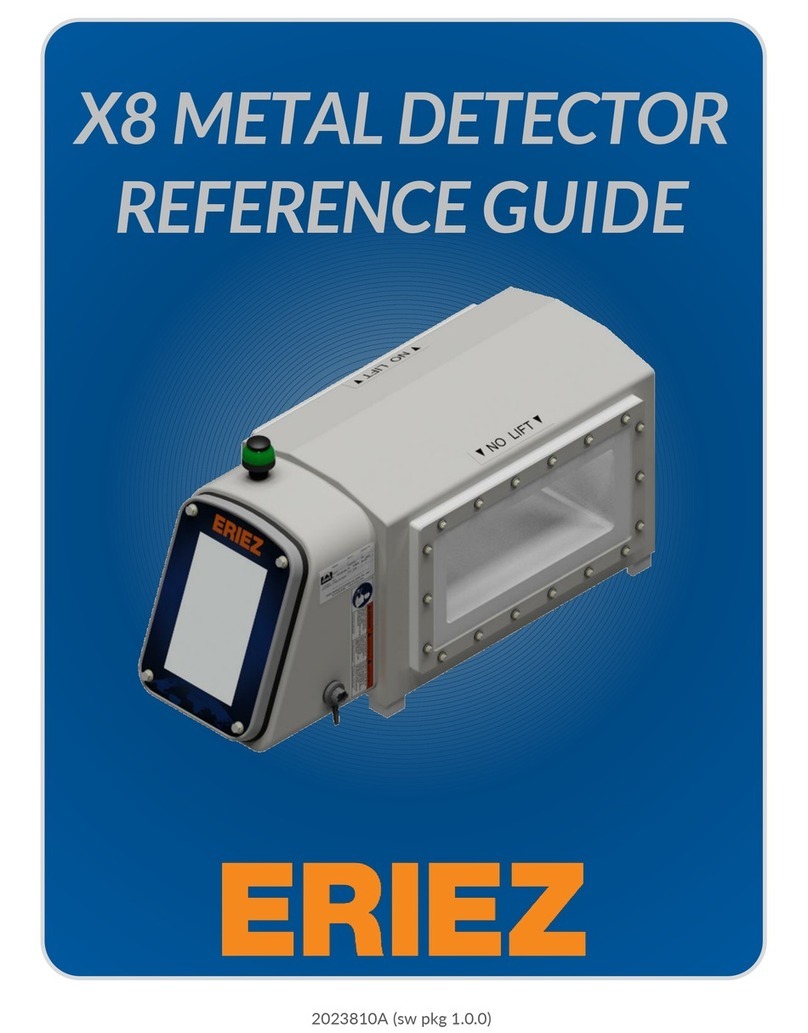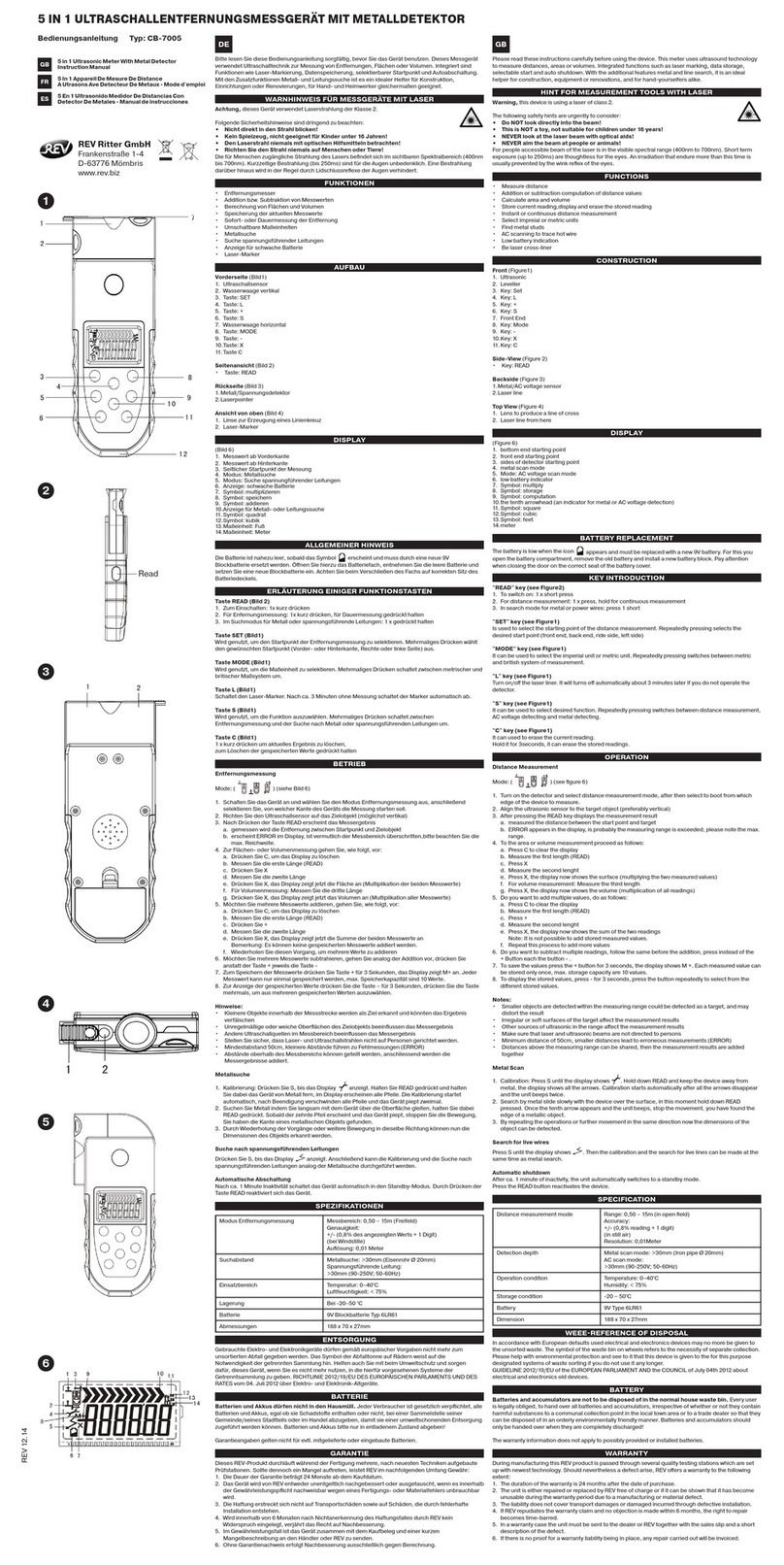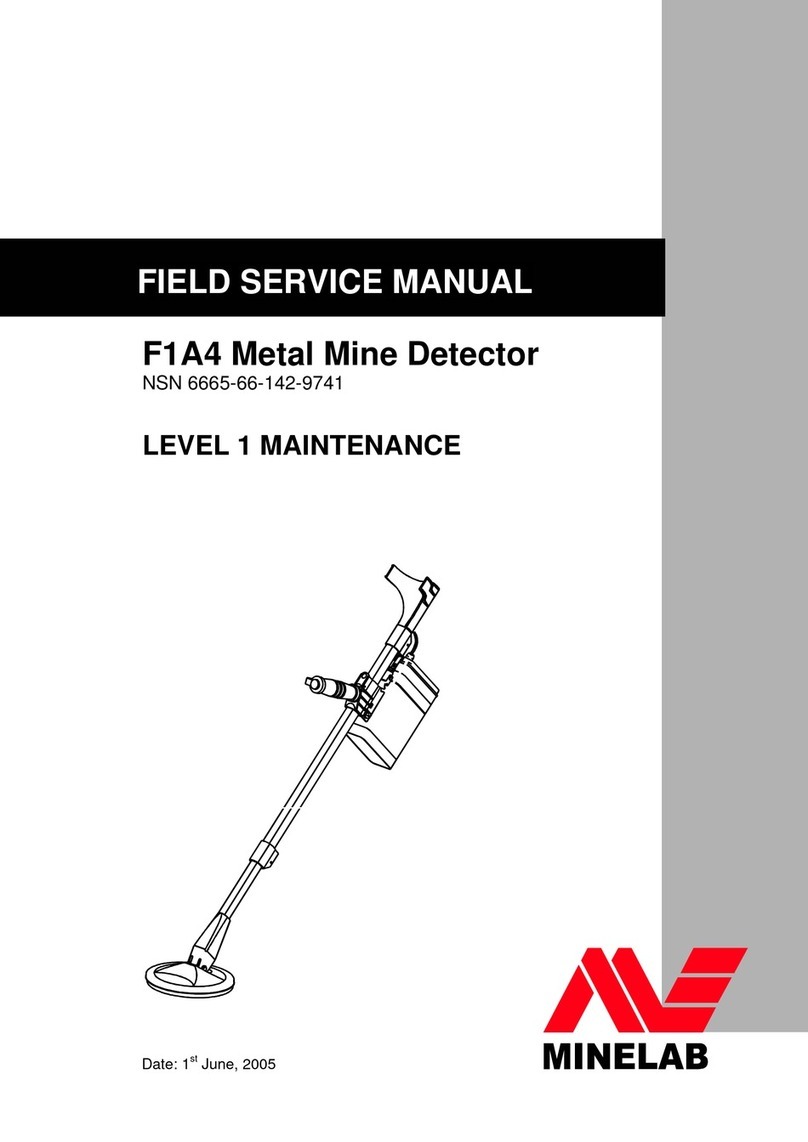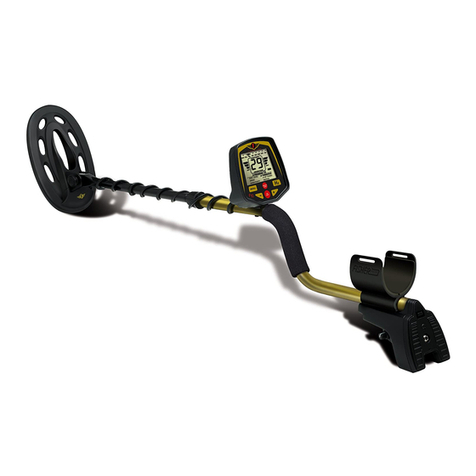CMD01N
16/12/2011 © Velleman nv
7
3) Adjusting DISCRIMINATION
Discrimination is the detector's ability to differentiate between types of metal. The
detector's DISCRIMINATION setting determines whether the detector will distinguish
between different types of ferrous and non-ferrous metals.
If MODE is set to TR2, start with DISCRIMINATION set to mid-range. While you use the
detector, adjust DISCRIMINATION to the best position. As you set DISCRIMINATION
higher, the detector becomes more sensitive to the differences between large aluminium
and gold pieces, for example, but some small valuable pieces, such as coins and small
rings, might be overlooked. As you set DISCRIMINATION to higher levels, the detector first
does not detect small pieces of silver paper, then thick foil, and finally metal objects like
pull tabs from aluminium cans.
Note: Each time you use the detector in a different area, you must adjust
DISCRIMINATION. Each search location presents new challenges.
f. False signals
Because your detector is extremely sensitive, trash-induced signals and other sources of
interference might cause signals that seem confusing. The key to handling these types of signals is
to dig for only those targets that emit a strong, repeatable signal. As you sweep the search coil back
and forth over the ground, learn to recognise the difference between signals that occur at random
and signals that are stable and repeatable.
To reduce false signals when searching very trashy ground, only scan a small area at a time using
slow, short overlapping sweeps.
g. Detection hints
No detector is 100 percent accurate. Various conditions influence metal detection. The detector's
reaction depends on a number of things:
•The angle at which the object rests in the ground.
•The depth of the object.
•The amount of iron in the object.
•The size of the object.
h. Pinpointing a target
Accurately pinpointing a target makes digging it up easier.
Accurate pinpointing takes practice, and we suggest you practice finding and digging up small metal
objects on your own property before you search other locations.
Sometimes, targets are difficult to accurately locate due to the sweep direction. Try changing your
sweep direction to pinpoint a target.
Follow these steps to pinpoint a target.
1. When the detector detects a buried target, continue sweeping the search coil over the target in a
narrowing side-to-side motion.
2. Make a visual note of the exact spot on the ground where the detector beeps.
3. Stop the search coil directly over this spot on the ground. Then move the search coil straight
forward away from you and straight back toward you a couple of times.
Make a visual note of the exact spot on the ground where the detector beeps.
4. Repeat Steps 1-3 at a right-angle to the original search line, making an "X" pattern. The target
will be directly below the "X" at the point of the loudest response [U].
Notes:
•If trash in an area is so heavy that you get false signals, slow your sweep and use shorter
sweeps.
•Recently buried coins might not respond the same as coins buried for a long period of time
because of oxidation.
•Some nails, nuts, bolts, and other iron objects (such as old bottle caps) oxidise and create a
"halo" effect. A halo effect is caused by a mixture of natural elements in the ground and the
oxidation created by different metals. Because of the metal mixtures, target signals might not be
in a "fixed" position. This effect makes these objects very hard to detect accurately. (See "Fine-
Tuning the Detector").
7. Care and maintenance
Wipe the detector with a damp cloth occasionally to keep it looking new. Do not use harsh
chemicals, cleaning solvents or strong detergents to clean the detector.
•Modifying or tampering with the detector's internal parts can cause a malfunction and might
invalidate its warranty.
